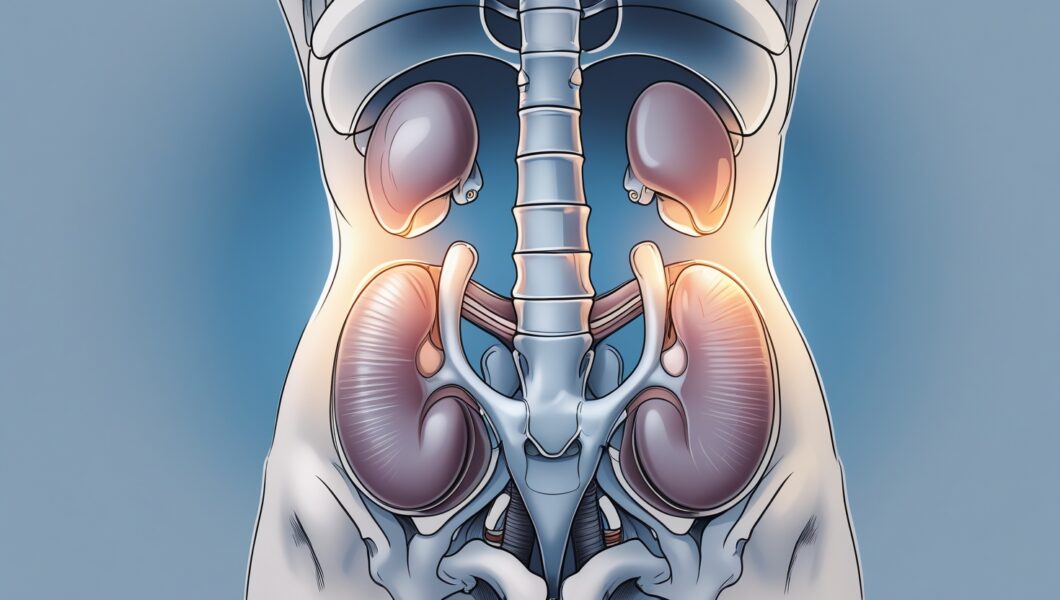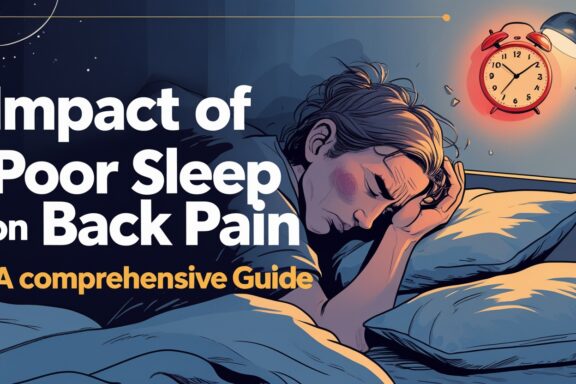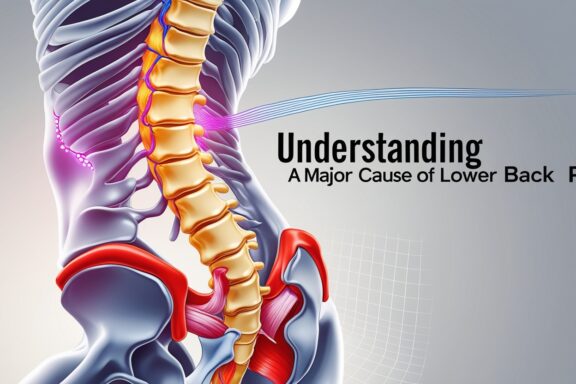Ever wondered why that persistent ache in your lower back might be more than just poor posture? Well, here's the thing – your kidneys and your back pain could be more connected than you think. Understanding this link isn't just academic curiosity; it's potentially life-saving knowledge that every person should have in their health toolkit.
That nagging pain in your lower back – you know, the one that's been bothering you for weeks? Sure, you might blame it on sleeping wrong or lifting that heavy box awkwardly. But what if I told you there's another culprit you probably haven't considered: your kidneys.
Now, before you start panicking, let me be clear. Not every backache signals kidney trouble. However, understanding the connection between kidney problems and lower back pain can be absolutely crucial for your health. Why? Because early detection of kidney issues can mean the difference between manageable treatment and serious complications down the road.
What Makes Kidney Pain Different from Regular Back Pain?
Here's where things get interesting – and a bit tricky. Kidney pain masquerades as back pain so well that even healthcare professionals sometimes need to do some detective work to tell them apart.
Your kidneys sit in your retroperitoneal space (fancy medical term for “behind your abdominal cavity”), nestled just below your ribcage on either side of your spine. When they're inflamed, infected, or otherwise compromised, they can send pain signals that radiate to your lower back, flanks, and sometimes even down to your groin area.
Regular back pain, on the other hand, typically stems from muscular strain, herniated discs, or spinal issues. It usually gets worse with movement and improves with rest. Kidney-related pain? Well, that's a different beast entirely – it tends to be constant, often described as a deep, aching sensation that doesn't really budge regardless of your position.
Common Kidney Conditions That Cause Lower Back Pain
Kidney Stones: The Notorious Troublemakers
Oh boy, kidney stones! If you've ever had them, you know they're no joke. These crystalline formations can range from tiny grains of sand to golf ball-sized monsters (though thankfully, the latter are rare). When a stone decides to take a journey through your urinary tract, it can cause excruciating pain that radiates from your flank to your lower back.
The pain from kidney stones is often described as coming in waves – intense, cramping episodes that can literally bring you to your knees. According to the National Kidney Foundation, “kidney stone pain typically starts suddenly and can be severe enough to cause nausea and vomiting” (National Kidney Foundation). Unlike muscle-related back pain, stone pain doesn't improve with position changes – lying down, standing up, it's all the same level of misery.
Kidney Infections (Pyelonephritis): When Things Get Serious
Kidney infections are basically UTIs that have gotten out of hand and traveled up to your kidneys. These infections don't mess around – they can cause severe lower back pain, usually on one side, accompanied by fever, chills, and that burning sensation when you urinate.
The pain from a kidney infection tends to be deeper and more constant than typical back strain. It's often described as a dull, aching pain that might worsen when you press on the area. Left untreated, kidney infections can lead to serious complications, including kidney damage and sepsis.
Polycystic Kidney Disease (PKD): The Silent Expander
PKD is a genetic condition where cysts gradually develop in your kidneys, causing them to enlarge over time. As these cysts grow, they can cause chronic, dull pain in your lower back and sides. This condition affects approximately 600,000 people in the United States, according to the PKD Foundation.
The tricky thing about PKD-related back pain is that it often develops gradually. You might dismiss it as aging or poor posture, but it's actually your kidneys literally expanding and putting pressure on surrounding structures.
Warning Signs: When Back Pain Might Be Kidney-Related
Alright, let's talk red flags. While not every backache warrants a trip to the ER, certain symptoms should definitely get your attention:
Immediate medical attention needed:
- Severe, sudden onset pain that doesn't improve with rest
- Pain accompanied by fever and chills
- Blood in your urine (even if it's just a pinkish tinge)
- Painful urination or frequent urge to urinate
- Nausea and vomiting alongside back pain
- Pain that radiates from your back to your groin
Other concerning symptoms:
- Persistent pain that lasts more than a few days
- Pain that's worse on one side
- Swelling in your legs, ankles, or around your eyes
- Changes in urination patterns
- Unexplained fatigue or weakness
Here's something many people don't realize: kidney pain location can be quite specific. It typically occurs in your flank area (the space between your ribs and hip on either side of your spine) and can radiate to your lower back. If you're experiencing pain in this specific area, especially combined with urinary symptoms, it's worth investigating further.
How Healthcare Professionals Diagnose Kidney-Related Back Pain
When you visit your doctor with back pain that might be kidney-related, they'll likely start with a thorough history and physical exam. They'll ask about your symptoms, when they started, what makes them better or worse, and whether you've noticed any changes in your urination.
The physical exam often includes something called the “costovertebral angle tenderness test” – basically, your doctor will gently tap the area over your kidneys to see if it causes pain. If it does, that's a pretty good indicator that your kidneys might be involved.
Common diagnostic tests include:
- Urine analysis – This can reveal blood, bacteria, or other abnormalities
- Blood tests – To check kidney function and look for signs of infection
- Imaging studies – CT scans, ultrasounds, or X-rays to visualize your kidneys
- Cultures – If infection is suspected, to identify the specific bacteria
Dr. Sarah Mitchell, a nephrologist at Johns Hopkins, notes that “distinguishing between kidney pain and musculoskeletal back pain requires careful evaluation of the patient's symptoms and appropriate testing” (Johns Hopkins Medicine).
Treatment Options: Getting Relief and Addressing the Root Cause
Treatment for kidney-related back pain obviously depends on what's causing it in the first place. Let's break this down by condition:
For Kidney Stones
- Pain management: NSAIDs, prescription pain medications, or even narcotic painkillers for severe cases
- Hydration therapy: Drinking lots of water to help flush out smaller stones
- Medical procedures: Lithotripsy (shock wave therapy), ureteroscopy, or surgical removal for larger stones
- Prevention: Dietary changes, increased fluid intake, and sometimes medications
For Kidney Infections
- Antibiotics: Usually the first line of treatment, often requiring a full course of 7-14 days
- Pain relief: Over-the-counter or prescription pain medications
- Hospitalization: In severe cases, IV antibiotics might be necessary
- Follow-up care: Repeat urine tests to ensure the infection has cleared
The good news? Most kidney infections respond well to appropriate antibiotic treatment when caught early. However, the key word here is “early” – delayed treatment can lead to complications that are much harder to manage.
Prevention Strategies: Keeping Your Kidneys (and Back) Happy
Prevention is always better than treatment, right? Here are some practical steps you can take to reduce your risk of kidney problems that might cause back pain:
Hydration is key: Aim for at least 8-10 glasses of water daily. Your urine should be light yellow – if it's dark, you need more fluids. This simple step can prevent many kidney stones and reduce infection risk.
Watch your diet: Limit sodium, reduce animal protein if you're prone to stones, and eat plenty of fruits and vegetables. If you've had calcium oxalate stones before, you might need to limit high-oxalate foods like spinach, nuts, and chocolate (I know, I know – life's not fair).
Don't hold it: When you need to urinate, go! Holding urine can increase infection risk and put unnecessary stress on your kidneys.
Practice good hygiene: Especially important for women – always wipe front to back, urinate after sexual activity, and avoid harsh soaps or douches in the genital area.
When to Seek Emergency Medical Care
Some situations require immediate medical attention – no ifs, ands, or buts about it:
- Severe pain that comes on suddenly and doesn't improve
- High fever (over 101°F) with back pain
- Visible blood in your urine
- Complete inability to urinate
- Persistent vomiting that prevents you from keeping fluids down
- Signs of sepsis (rapid heartbeat, confusion, difficulty breathing)
Trust your instincts here. If something feels seriously wrong, don't try to tough it out. Emergency rooms are equipped to handle kidney emergencies, and early intervention can prevent serious complications.
Frequently Asked Questions
Q: Can kidney problems cause pain in both sides of my back? A: Yes, though it's more common to experience pain on one side. Bilateral kidney problems (affecting both kidneys) can cause pain on both sides, but this is less typical.
Q: How long does kidney pain usually last? A: This depends entirely on the cause. Kidney stone pain can last hours to days until the stone passes. Kidney infection pain should improve within 24-48 hours of starting antibiotics. Chronic conditions like PKD may cause persistent, ongoing discomfort.
Q: Is kidney pain always severe? A: Not necessarily. While kidney stones can cause excruciating pain, other kidney problems might cause more subtle, chronic discomfort that's easy to dismiss or attribute to other causes.
Q: Can I have kidney problems without back pain? A: Absolutely! Many kidney conditions, especially in their early stages, don't cause pain at all. This is why regular check-ups and urine tests are so important.
Q: What's the difference between kidney pain and muscle pain in the back? A: Kidney pain is typically deeper, more constant, and doesn't change with movement or position. Muscle pain usually worsens with certain movements and improves with rest or position changes.
Final Thoughts: Your Health Journey Matters
Understanding the link between kidney problems and lower back pain isn't just about medical knowledge – it's about taking charge of your health and knowing when to seek help. Your body has its own way of sending signals, and learning to interpret these messages can make all the difference in maintaining your health and quality of life.
Remember, you know your body better than anyone else. If something doesn't feel right, don't hesitate to reach out to a healthcare professional. Early detection and treatment of kidney problems can prevent serious complications and get you back to feeling your best.
The connection between kidney health and lower back pain is real, significant, and worth understanding. By staying informed, staying hydrated, and staying alert to your body's signals, you're taking important steps toward protecting both your kidney health and your overall well-being.
Take care of your kidneys, and they'll take care of you. After all, you've only got two of them, and they're working 24/7 to keep you healthy. They deserve a little TLC, don't you think?







